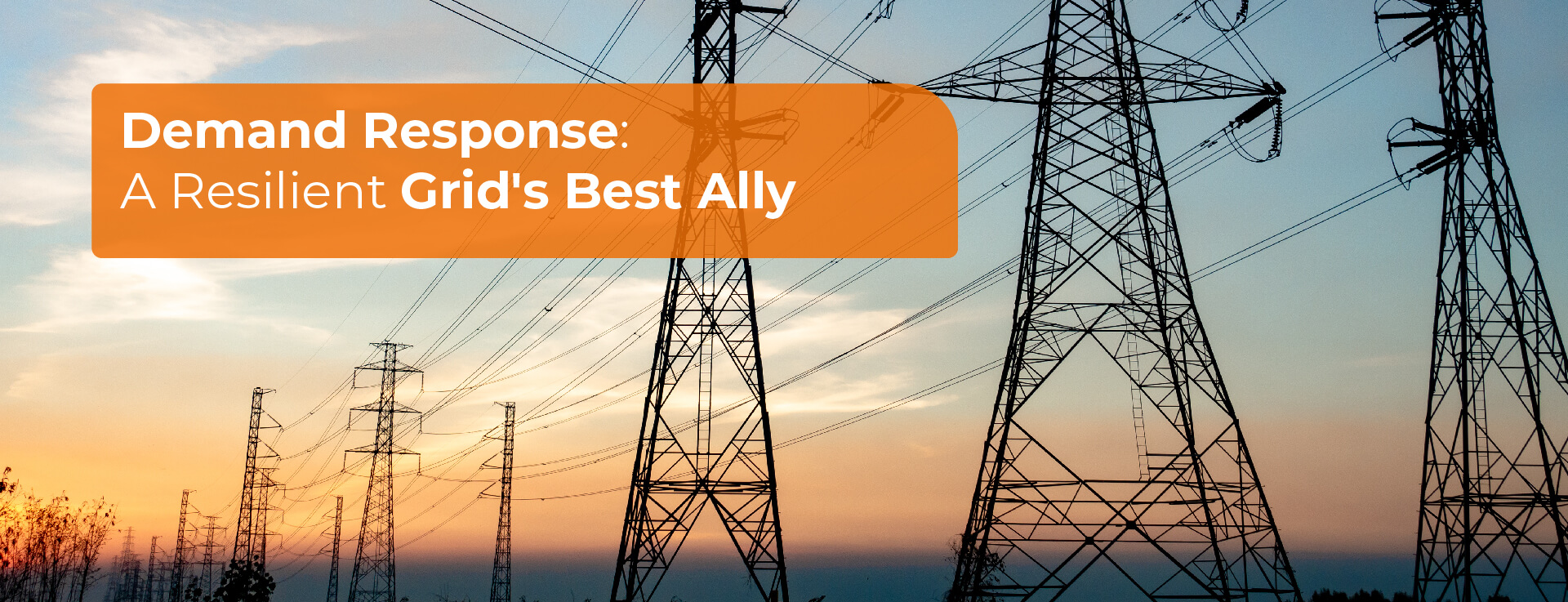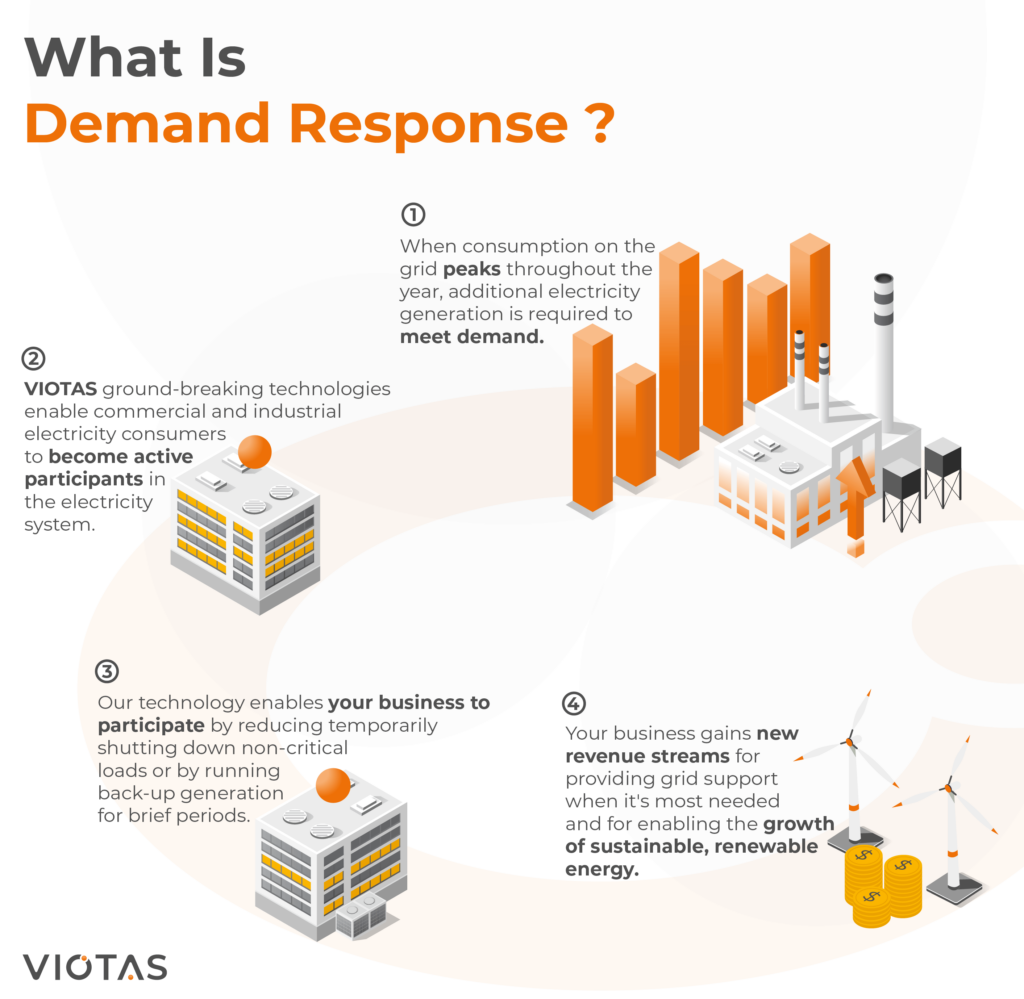
Demand Response: A Resilient Grid’s Best Ally
In an age when our lives are increasingly dependent on a continuous and reliable supply of electricity, grid resilience has become a critical concern. The modern grid, a complex web of power generation, transmission, and distribution, faces unprecedented challenges. Climate change, extreme weather events, evolving grid requirement are just a few of the obstacles that can disrupt the flow of electricity. However, there is a powerful solution at hand: Demand Response.

Understanding Grid Resilience
Grid resilience refers to the ability of an electricity grid to withstand and recover from various disturbances and maintain a reliable supply of power to its consumers. In simpler terms, it is the grid’s capacity to “bounce back” quickly when faced with disruptions.
Resilience is of paramount importance, as power outages can have far-reaching consequences. Beyond the inconvenience of lost productivity, they can impact critical infrastructure, public safety, healthcare, and even economic stability. To fortify the grid against these challenges, grid operators need innovative tools and strategies.

The Vulnerability of Modern Grids
Modern grids are susceptible to a multitude of threats:
- Variable Renewable Energy Sources: The integration of renewables like solar and wind can introduce grid instability due to their intermittent nature. System operators are encountering the challenge of handling the growing amount of variable renewable energy generation, which is necessary to reduce carbon emissions in the electricity sector. This requires a proper grid management solution for grid operators to balance supply and demand.
- Extreme Weather Events: Extreme weather events heighten the risk of disruptions to power supply. Hurricanes, wildfires, and severe storms have the potential to inflict significant damage on power infrastructure, resulting in widespread outages. The escalating frequency and intensity of these events due to climate change make grid resilience an urgent concern. For instance, the US experienced a record 22 extreme weather events in 2021, causing an estimated $145 billion in damages and significantly disrupting power grids(1).
- Evolving Grid Requirement: As energy generation becomes more decentralised nowadays, the current grid structure faces new challenges. This shift demands a solution that can curb or postpone the energy demand for extensive grid reinforcement.
To address these vulnerabilities and enhance grid resilience, the power industry has turned to innovative solutions like Demand Response.
The Role of Demand Response
Demand Response is a demand-side management strategy that empowers consumers to adjust their electricity usage during peak periods or emergencies. By voluntarily reducing their consumption when called upon by Grid Operators, consumers help alleviate the strain on the power system.
Here’s how Demand Response bolsters grid resilience:
- Load Shifting: When being directed by the Transmission System Operators (TSOs), Demand Response enables a deliberate shift of electricity usage during critical peak-demand periods, effectively alleviating the grid’s strain during periods of high demand. This not only lightens the load on the grid but also offers consumers the advantage of reduced peak-hour electricity rates, resulting in cost savings.
- Emergency Response: In times of grid stress, like during extreme weather or when power generation capacity is limited, Demand Response can be automatically activated to ensure grid stability. It also provides essential frequency response services, which are vital in the aftermath of a major generator’s failure.
- Grid Optimization: By balancing supply and demand, Demand Response minimises the risk of blackouts and brownouts. It enhances grid efficiency, reduces waste, and decreases the need for costly infrastructure upgrades. This, in turn, can contribute to a reduction in greenhouse gas emissions by decreasing the reliance on fossil fuel backup power plants during peak periods.
Real-World Examples
Ireland is a shining example of how Demand Response can enhance grid resilience. The Single Electricity Market (SEM) in Ireland introduced a Demand Side Unit program, allowing businesses and consumers to participate in Demand Response. This initiative helps mitigate grid strain during peak periods and contributes to a more stable and reliable electricity supply.
During storms and extreme weather events, Irish grid operators have utilised Demand Response to ensure power continuity, thereby safeguarding critical infrastructure and public safety. This approach has significantly reduced the vulnerability of the Irish grid to disruptions. In addition to enhancing grid resilience, Demand Response has also been vital in integrating a growing share of renewable energy sources into the grid.
Ireland’s experience with Demand Response is not unique. Across the globe, countries and regions are recognising the importance of this innovative approach to grid management. In the United States, for instance, Demand Response is a vital component of the grid resilience strategy, particularly in regions prone to extreme weather events, such as Texas, where the winter storm of 2021 led to a severe grid crisis.
—-
VIOTAS specialise in developing and implementing Demand Response solutions that contribute to grid resilience. Thanks to VIO Link, our advanced demand response technology, your business can access the fastest and most lucrative market products and future-proof against greater demand response performance requirements. Our recent collaboration with QK Cold Stores helped them achieve a 30% Increase in Frequency Response income while simultaneously supporting grid resilience during peak demand periods.



